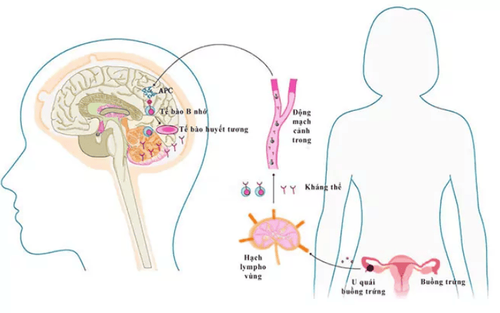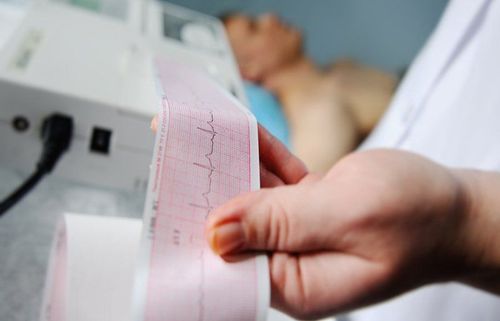This is an automatically translated article.
Article by Doctor Nguyen Kim Chung - Department of General Surgery, Vinmec Central Park International General Hospital.
Epilepsy surgery is a procedure that removes or changes an area of your brain where seizures originate. Epilepsy surgery is most effective when seizures originate in a single location in the brain. It is not a first-line treatment but is considered when at least two antiepileptic drugs fail to control seizures.
1. Why is surgery necessary?
Epilepsy surgery may be an option when medication does not control seizures, a condition known as drug-resistant epilepsy. The goal of epilepsy surgery is to eliminate seizures or limit their severity with or without the use of medication.
Uncontrolled seizures can lead to a number of complications and health risks, including:
Physical trauma during a seizure Drowning, if the seizure occurs while bathing or swimming Depression and anxiety Anxiety Impairment of memory or other thinking skills Developmental delay in children Sudden death, a rare complication of epilepsy
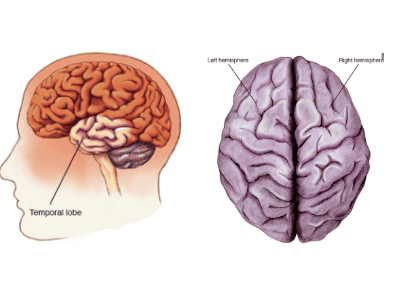
Mục tiêu của phẫu thuật động kinh là loại bỏ cơn động kinh hoặc hạn chế mức độ nghiêm trọng của chúng
2. Types of surgery
Seizures are caused by abnormal functioning of certain nerve cells. The type of surgery depends largely on the location of the nerve cells causing the seizure and the patient's age. Types of surgery include:
Surgical removal: the most common epilepsy surgery, is the removal of a small part of the brain. Surgeons remove brain tissue in the area of the brain where seizures begin, often the site of a tumor, brain injury, or malformation. The surgical removal is usually performed on one of the temporal lobes, an area that controls visual memory, language comprehension, and emotion. Laser interstitial heat therapy (LITT) is a minimally invasive surgery that uses a laser to locate and destroy a small portion of brain tissue. Magnetic resonance imaging (MRI) is used to guide the surgeon. Deep brain stimulation is the use of an electrode - permanently implanted deep inside the brain - to periodically release electrical signals, interrupting the abnormal activity that causes seizures. This procedure is also guided by MRI. An electrical pulse generator is implanted in the chest. Cystectomy is an operation to sever - completely or partially - the bundle of nerves connecting the right and left sides of the brain (the corpus callosum). This method is often used with children who experience abnormal brain activity that spreads from one side of the brain to the other. ). This surgery is usually reserved for children with epilepsy that originates in more than one hemisphere, often as a result of a condition present at birth or in the early stages. Functional hemispherectomy: also used mainly in children, is the lower part of the hemisphere that causes seizures to sever its connections with the body's nervous system without removing actual brain tissue the.
3. Risks of epilepsy surgery
Different areas of the brain control different functions. Therefore, risks vary depending on the surgical site and type of surgery. The surgical team will help you understand the risks specific to your procedure, as well as the methods they will use to reduce them. Risks may include the following:
Memory and language problems that may affect your ability to understand and use language Vision impairment where the fields of the eye overlap Depression emotions or other mood swings that may affect interpersonal or social functioning Headache Stroke
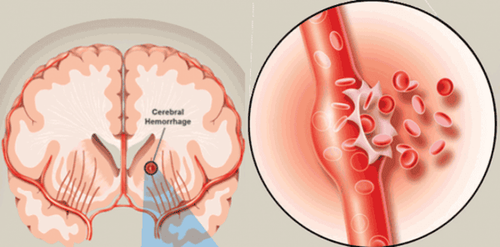
Động kinh có thể dẫn đến đột quỵ
4. Preparing for epilepsy surgery
If you are likely to have surgery, you will work with a medical team at a specialized epilepsy center. The team will run a number of tests to determine your eligibility for surgery, determine a suitable surgical site, and understand the details of how that particular brain area is functioning. Some of these tests are done as outpatient procedures, while others require a hospital stay.
4.1 Evaluation of problem areas
The following procedures are standard tests used to determine the source of abnormal brain activity.
Baseline electroencephalogram (EEG). In this test, electrodes are placed on the scalp to measure the electrical activity produced by the brain when you are not having a seizure. Patterns in this activity may suggest general areas of the brain may be affected. Video EEG. Continuous EEG with video surveillance records your seizures as they occur. Because you must temporarily stop anti-seizure medication for a seizure to occur, you will be admitted to the hospital for this test. Correlating changes in your EEG with body movements during a seizure helps pinpoint the area of your brain where your seizure is starting. Magnetic resonance imaging (MRI). An MRI, which uses a magnetic field and radio waves to create detailed images, can identify damaged cells, tumors, or other abnormalities that can cause seizures. The surgeon may order additional tests to localize the source of the seizure and determine the nature of the abnormal activity. These tests may include:
Invasive EEG. If an EEG cannot locate the seizure trigger, monitoring can be done with surgically placed electrodes. The surgeon places a grid or strip of electrodes on the surface of the brain or places electrodes deeper in the brain. EEG monitoring is done while you are unconscious. Video EEG with invasive electrodes. Electrodes placed surgically may also be needed for the video EEG procedure. After surgery, video and EEG data are recorded during your hospital stay while you are awake but not on antiepileptic medication. Positron emission tomography (PET) is a specialized imaging device used to measure brain function when you do not have seizures. The images alone - or in combination with MRI data - can help determine the source of your seizures. Single-emission computed tomography (SPECT). This procedure measures blood flow in the brain during a seizure. Normally, blood flow is higher in the part of the brain where seizures begin. You will be admitted to the hospital to undergo this test.
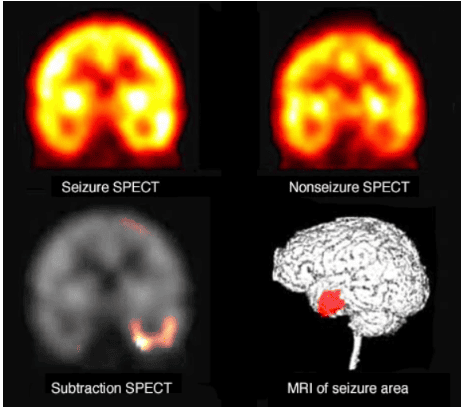
Các xét nghiệm tiêu chuẩn được sử dụng để xác định nguồn gốc của hoạt động não bất thường.
4.2 Assessment of brain function
Depending on the surgical site, the doctor may order tests to pinpoint the exact areas of the brain that control language, sensory, motor, or other important functions. This information helps your surgeon preserve function to the greatest extent possible when removing or changing an area of your brain.
Tests may include:
Functional MRI : identifying areas of the brain that are active when you are performing a specific task, such as listening or reading. This helps the surgeon know the exact function of the sites in the brain. Test Wada . With this test, an injected medicine temporarily puts one side of your brain to sleep for a while. Then you perform a language and memory function test. This test can help determine which side of your brain is dominant in your language use. Although functional MRI often replaces this test, it may be used if imaging is not possible. Brain mapping: Small electrodes are surgically placed on the surface of the brain. When you're awake after surgery, you perform a number of tasks that correspond to measurements of your brain's electrical activity.
5. What happens during epilepsy surgery?
Before surgery
To avoid infection, your hair will be cut short or shaved above the part of the skull that will be removed during surgery. An intravenous tube will be placed to administer fluids, anesthetics, or other medications during surgery.
During surgery
Your heart rate, blood pressure and oxygen levels will be monitored throughout the surgery. An EEG monitor can also record brain waves during surgery to better locate the part of your brain where your seizures started.
Epilepsy surgery is usually done during general anesthesia, and you will be unconscious during the procedure. In rare cases, your surgeon may wake you up so that they can pinpoint the part of your brain that controls language and movement. In such cases, you will receive pain medication.
The surgeon creates a relatively small window in the skull, depending on the type of surgery. After surgery, the bone window is replaced and fastened to the remaining skull to heal.
After surgery
You will be in a special recovery area to be carefully watched when you wake up. You may need to spend the first night after surgery in an intensive care unit. The total hospital stay for most epilepsy surgeries is usually about 3 or 4 days.
When you wake up, your head will be swollen and painful. Most people need pain medication for at least the first few days. Applying ice on the head can also help. Swelling and pain should subside after a few weeks.
You may not be able to return to work or school for about one to three months. You should rest and relax for the first few weeks after surgery and then gradually increase your activity level.
It is unlikely that you will need intensive rehabilitation as long as the surgery is completed without complications such as stroke or loss of speech.

Sau phẫu thuật, bệnh nhân được theo dõi cẩn thận để tránh các tai biến
6. Epilepsy surgery results
Results vary depending on the type of surgery performed. The expected outcome is to be able to control seizures with medication.
The most common and well-understood procedure - temporal lobe resection - results in seizure-free results for about two-thirds of people. Studies show that if you don't have epilepsy in the first year after your temporal lobe surgery - plus medication - the chance of having a seizure at two years is 87-90%. If you have been seizure-free for two years, the chance of being seizure-free is 95% at 5 years, 82% at 10 years.
If you have remained seizure-free for at least a year, your doctor may consider tapering off your antiepileptic medication and eventually eliminating it altogether. Most people with epilepsy who stop taking their medication can get their seizures under control with continued drug treatment.
To register for examination and treatment at Vinmec International General Hospital, you can contact Vinmec Health System nationwide, or register online HERE.







